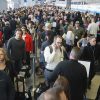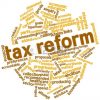Small Business and Entrepreneurial Confidence is High for 2018
According to the report, 92 % of small business owners indicated that a positive economic environment is a critical factor to their ability to grow. Other growth factors include customer demand (93 percent), the ability to attract and retain quality employees (76 percent), favorable government policies (76 percent) and access to capital (63 percent).
“Entrepreneurs continue to be upbeat about future economic growth as they set their sights on 2018,” said Sharon Miller, head of small business, Bank of America. “Small business owners are optimistic about their ability to close the year strong and the outlook for the economy in the year ahead. However, these surges in small business owner confidence have not yet translated into plans for long-term growth.”
The report also revealed that entrepreneurs in urban areas have the most dynamic business outlooks and plans for growth, while their rural counterparts are more upbeat about the economy. Specifically:
- Fifty-seven percent of urban entrepreneurs plan to grow their business over the next five years (vs. 50 percent of their rural peers).
- Fifty-two percent of urban business owners are confident that their revenue will increase in the coming year (vs. 47 percent of rural entrepreneurs).
- Twenty percent of urban entrepreneurs plan to hire in 2018 (vs. 15 percent of rural business owners).
Urban entrepreneurs are more concerned than their rural counterparts about the U.S. and/or global stock market (52 percent of urban vs. 33 percent of rural) and credit availability (36 percent of urban vs. 25 percent of rural). Meanwhile, rural business owners are more concerned than urban entrepreneurs about the strength of the U.S. dollar (60 percent of rural vs. 48 percent of urban), consumer spending (56 percent of rural vs. 40 percent of urban) and commodities prices (53 percent of rural vs. 45 percent of urban). Even with these differences, the cost of health care tops the list of economic concerns for both urban and rural business owners (70 percent and 72 percent are concerned, respectively).
An Overall Rundown of What Is Expected in 2018
- Eighty-one percent of small business owners expect their revenue to increase in 2018 (30 percentage points higher than the national average).
- Forty-three percent plan to hire in the year ahead (27 percentage points higher than the national average).
- Seventy-six percent plan to grow over the next five years (25 percentage points higher than the national average).
- Sixty-three percent expect their local economy to improve within the next 12 months (15 percentage points higher than the national average).
Are These Predictions for Brick and Mortar Stores or Virtual Business?
Surprisingly, fewer than half of entrepreneurs polled in the survey by the Small Business Administration say social media and virtual communities are critical to many aspects of their business. Only 24 percent rely on social media for hiring, 37 percent use it to sell goods and services, and roughly two in five use social platforms to share updates with customers. Just 30 percent say social media has had a positive impact on their business’ bottom line in the past year. Instead, nearly three-quarters of business owners say they rely more on in-person interactions and networks for support running their business.
While social platforms aren’t seen as critical to small business success, digital tools that help businesses manage daily business operations are. Nearly three-quarters of entrepreneurs use at least one digital tool to run their business, with digital banking (46 percent) and financial tracking and/or accounting apps (34 percent) reported as the most popular tools.
However, the above information looks like it has a lot to do with what generation was being polled. Millennial entrepreneurs buck the national trend, reporting they are much more reliant on social media for sharing updates with their customers (74 percent), selling goods and services (66 percent) and hiring employees (56 percent). Forty-nine percent of millennials say social media has had a positive impact on their business’ bottom line in the past year, a full 19 percentage points higher than the national average. And, half of millennials primarily turn to virtual communities to connect with others about business matters. This generation is also the most likely to use digital tools—nine out of 10 use at least one for daily operations, and 49 percent of millennials use digital banking.
For a complete, in-depth look at the insights of the nation’s small business owners, read the fall 2017 Bank of America Business Advantage Small Business Owner Report, and for additional insights, download the Small Business Owner Report Infographic here.





















Add comment